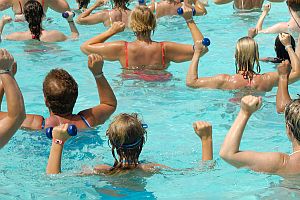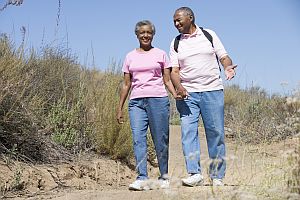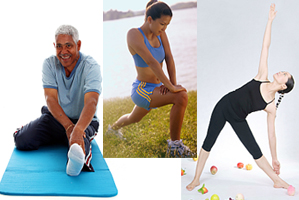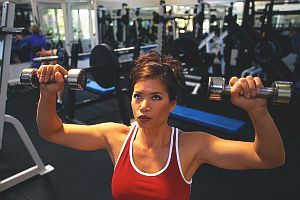The Best In-Pool Exercises
 With summer here, many fitness enthusiasts are taking to a cooler place to get their workout: the pool. According to Women’s Health magazine, “No other workout burns calories, boosts metabolism, and firms every muscle in your body (without putting stress on your joints) better than a swimming workout.” If you’re sick of jogging in the hot sun, if you’re looking for a cool and low-impact way to get your exercise, or if you’ve got a bad back and you’re searching for the right exercises, look to the water—pool exercises may be right up your alley. Here are a few of the best in-pool exercises to get started with:
With summer here, many fitness enthusiasts are taking to a cooler place to get their workout: the pool. According to Women’s Health magazine, “No other workout burns calories, boosts metabolism, and firms every muscle in your body (without putting stress on your joints) better than a swimming workout.” If you’re sick of jogging in the hot sun, if you’re looking for a cool and low-impact way to get your exercise, or if you’ve got a bad back and you’re searching for the right exercises, look to the water—pool exercises may be right up your alley. Here are a few of the best in-pool exercises to get started with:
- Water walking. For this exercise, you’ll need a piece of fitness equipment called “hand webs,” which are sort of like fins for your hands. As the Mayo Clinic suggests, “In water that’s about waist-high, walk across the pool swinging your arms like you do when walking on land. Avoid walking on your tiptoes, and keep your back straight. Tighten your abdominal muscles to avoid leaning too far forward or to the side. To increase resistance as your hands and arms move through the water, wear hand webs or other resistance devices. Water shoes can help you maintain traction on the bottom of the pool.” For more intensity, try deep-water walking next.
- Arm exercises. These can also be done with hand webs to increase resistance for better muscle toning and more calories burned. In waist-high water, put your arms down at your sides, then slowly raise them, extended, to the surface of the water. The hand webs will create a drag that will force your arm and abdominal muscles to work harder. Then simply lower your extended arms back down to your sides and repeats.
- Resistance exercise. For this, you’ll need a kickboard. This exercise provides another type of resistance. From the Mayo Clinic, “Standing up straight with your legs comfortably apart, tighten your abdominal muscles. Extend your right arm and hold the kickboard on each end. Keeping your left elbow close to your body, move the kickboard toward the center of your body. Return to the starting position and repeat 12 to 15 times or until you’re fatigued. Then extend your left arm and repeat the exercise on the other side. Standing up straight with your legs comfortably apart, tighten your abdominal muscles. Extend your right arm and hold the kickboard on each end. Keeping your left elbow close to your body, move the kickboard toward the center of your body. Return to the starting position and repeat 12 to 15 times or until you’re fatigued. Then extend your left arm and repeat the exercise on the other side.”
- Leg exercises. These require a pool noodle, which are very inexpensive and quite easy to come by. To work out your leg muscles, tie the pool noodle around your leg or water shoe, if you use one. In waist-high water, stand with your back against the edge of the pool. For stability, grab hold of the pool’s edge with your hands, then straighten your right leg in front of you until it is at a 90 degree angle. Then return your leg to the first position and begin again, doing 12 to 15 reps for each leg.


